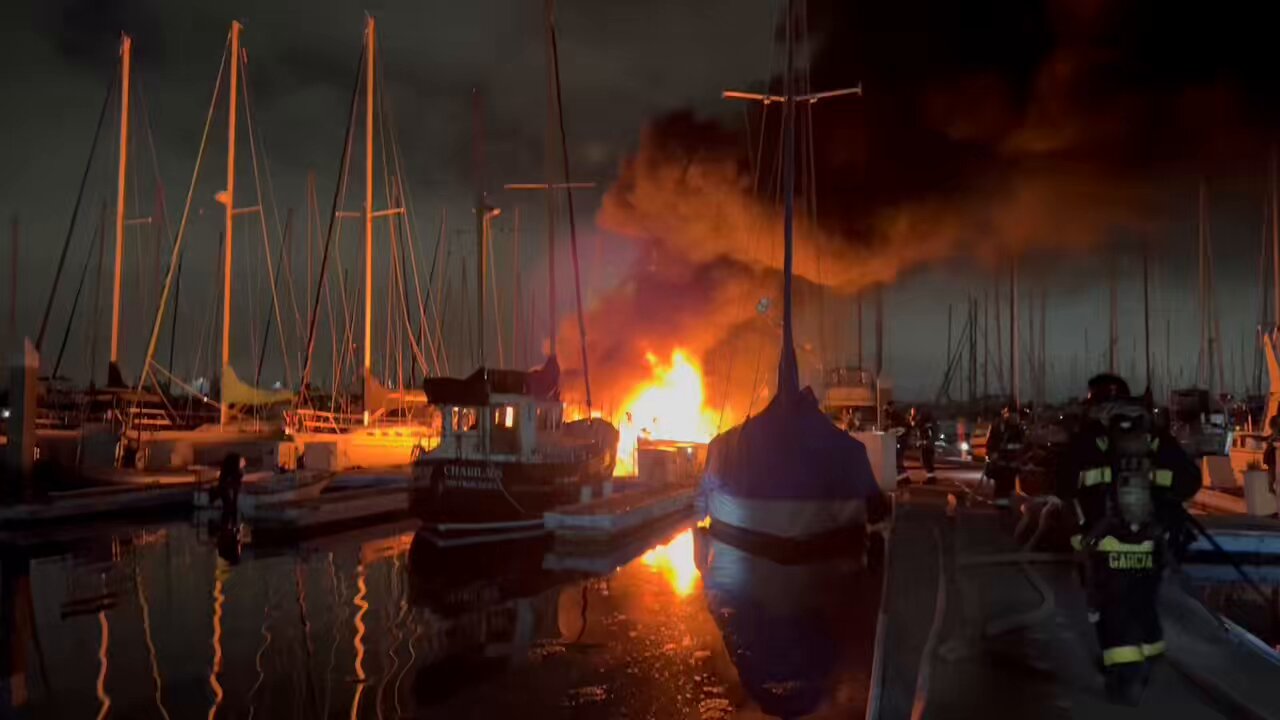State regulators have cited PG&E for violating a dozen utility safety regulations in the Camp Fire last year, saying the company failed to heed warning signs about the aging tower blamed for the fire, and its pre-fire inspection efforts were flawed and “ineffective.” Jaxon Van Derbeken reports.
State regulators have cited PG&E for violating a dozen utility safety regulations in the Camp Fire last year, saying the company failed to heed warning signs about the aging tower blamed for the fire, and its pre-fire inspection efforts were flawed and "ineffective."
In the report filed late Tuesday but made public Wednesday, the California Public Utilities Commission’s safety branch focused on critical safety lapses on the nearly 100-year-old Caribou-Palermo line related to the fire in November of last year.
They concluded that PG&E failed “to maintain an effective inspection and maintenance program to identify and correct hazardous conditions on its transmission lines” in the high fire risk area spanned by the line, where a worn C-hook snapped, triggering an explosion and the fire that left 85 people dead.
The various methods the company used to check on the tower and the line —both by air and on foot – as well as last-minute climbing inspections, were “ineffective in finding” the wear that triggered the fire, regulators said. They concluded the company's “current and prior inspection and maintenance programs were inadequate.”
Regulators emphasized that “visible wear” was evident on the arms of the tower tied to the fire, No. 27/222, but PG&E failed to carry out the climbing inspections to resolve any question about safety.
“This omission is a violation of PG&E’s own policy requiring climbing inspection on towers where recurring problems exist,” the report found.
The wear on the arms should have served as a red flag to look for wear in other steel components, like hanger plates, regulators said. Hanger plates are key because they secure the hooks to the tower structure. The report noted that post-fire inspections found 13 dangerously worn hanger plates on the Caribou-Palermo line.
Local
Regulators concluded that “a climbing inspection of the incident tower during that time could have identified the worn C-hook before it failed, and that its timely replacement could have prevented ignition of the Camp Fire.”
Separately, regulators said, the company failed to explain why it took six years to carry out a regulatory mandate to replace an at-risk type of wire connector on the tower flagged by federal regulators.
State regulators also found that on the very next tower from the one blamed in the fire, No. 27/221, about 800 feet away, the company saw an anchor that secured the line had come loose. That loose component posed an urgent safety hazard, regulators said, but the company failed to prioritize it for immediate repair when it was spotted in September 2018. Instead, the company gave itself a year to fix the problem.
Regulators pointed out that in another inspection done after the fire, the company called for immediate repair of a similarly loose anchor.
When CPUC regulators checked another tower, No. 24/199, for themselves after the Camp Fire, they found that one C-hook had been worn more than half way through, concluding “that demonstrates that PG&E did not maintain the tower for its intended use.”
They noted that the aerial inspections done before the fire missed “significant wear” on both the tower that caused the fire and 24/199, and therefore were “not thorough.”
Many of the violations found by regulators were uncovered separately during NBC Bay Area’s Investigative Unit probe into the worst wildfire in the state’s history, which noted that the company had not climbed the tower tied to the fire for at least a decade.
NBC Bay Area first reported about questions surrounding last-minute inspections of towers on the Caribou-Palermo line, which declared many of the 79 towers to be in “overall great condition.” The fire happened before the inspections were completed, regulators said.
According NBC Bay Area’s review of PG&E records, eight towers that had passed last minute, pre-fire climbing inspections failed emergency inspections done in the fire’s aftermath. The problem with the pre-fire inspections, regulators found, was crews were “using an outdated inspection form during the detailed climbing inspections that PG&E conducted from September 19 to November 5, 2018.”
“This raises the question of whether inspectors were evaluating” the steel hardware on the towers “even when they performed climbing inspections.” Regulators say the company had changed its form to include hardware as of September 2018, just as the last-minute inspections had started, but the form the inspectors used that same month was the old one that did not include a category for hardware assessments.
That was a violation of PG&E protocols and standards, regulators concluded.
Regulators also cited the utility for failing to immediately report its role in a second fire on the same day as the Camp Fire, which was sparked when a tree knocked down a distribution line at Concow and Rim roads in the town of Concow. That fire was subsumed in the larger fire started on the Caribou-Palermo line.
In a statement to NBC Bay Area, PG&E said the company accepts the conclusion that the line was to blame for the fire and remains "deeply sorry about the role our equipment played in this tragedy."
The company says going forward, PG&E is focusing on helping in recovery, resolving claims and reducing wildfire risks.



